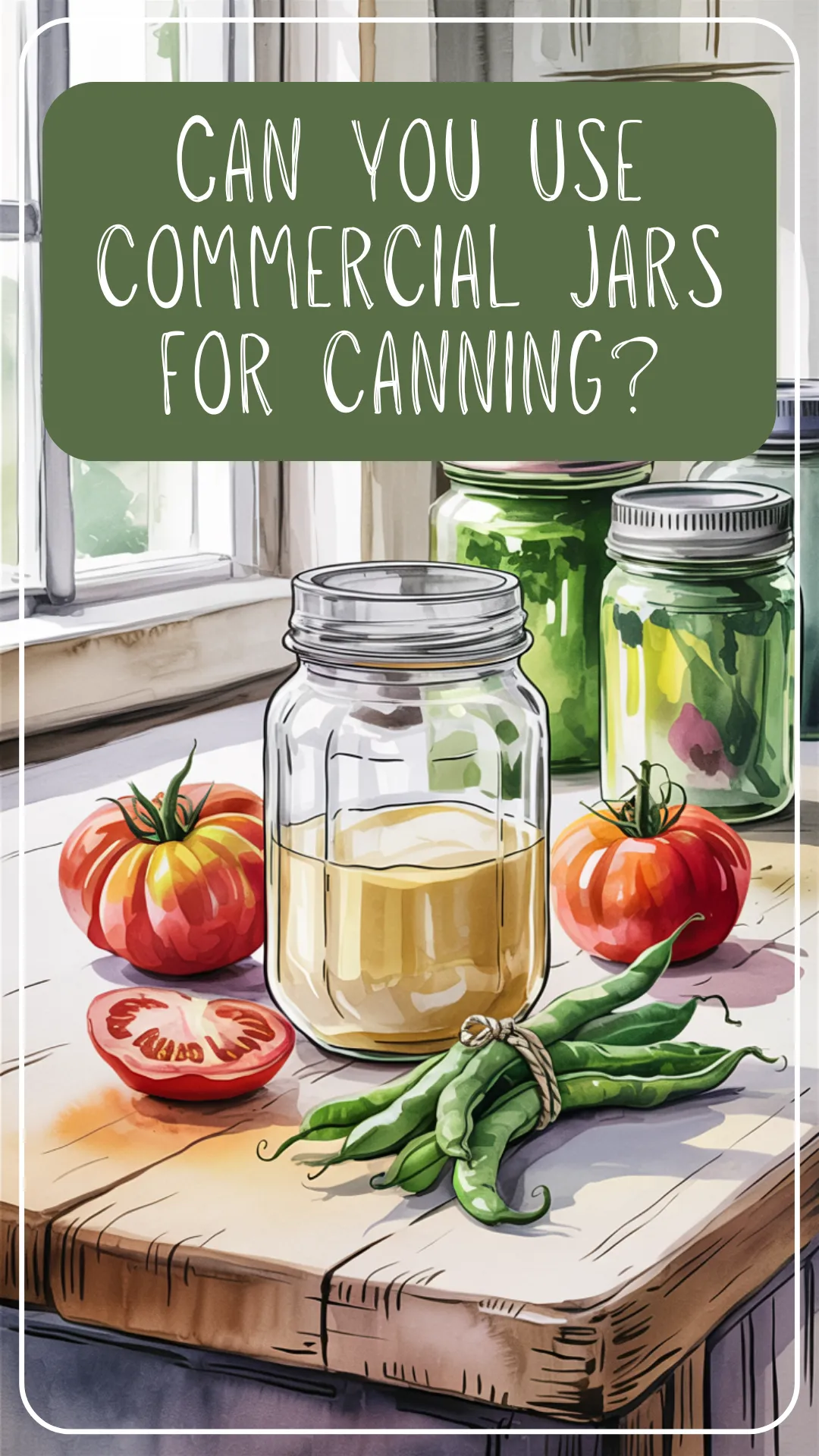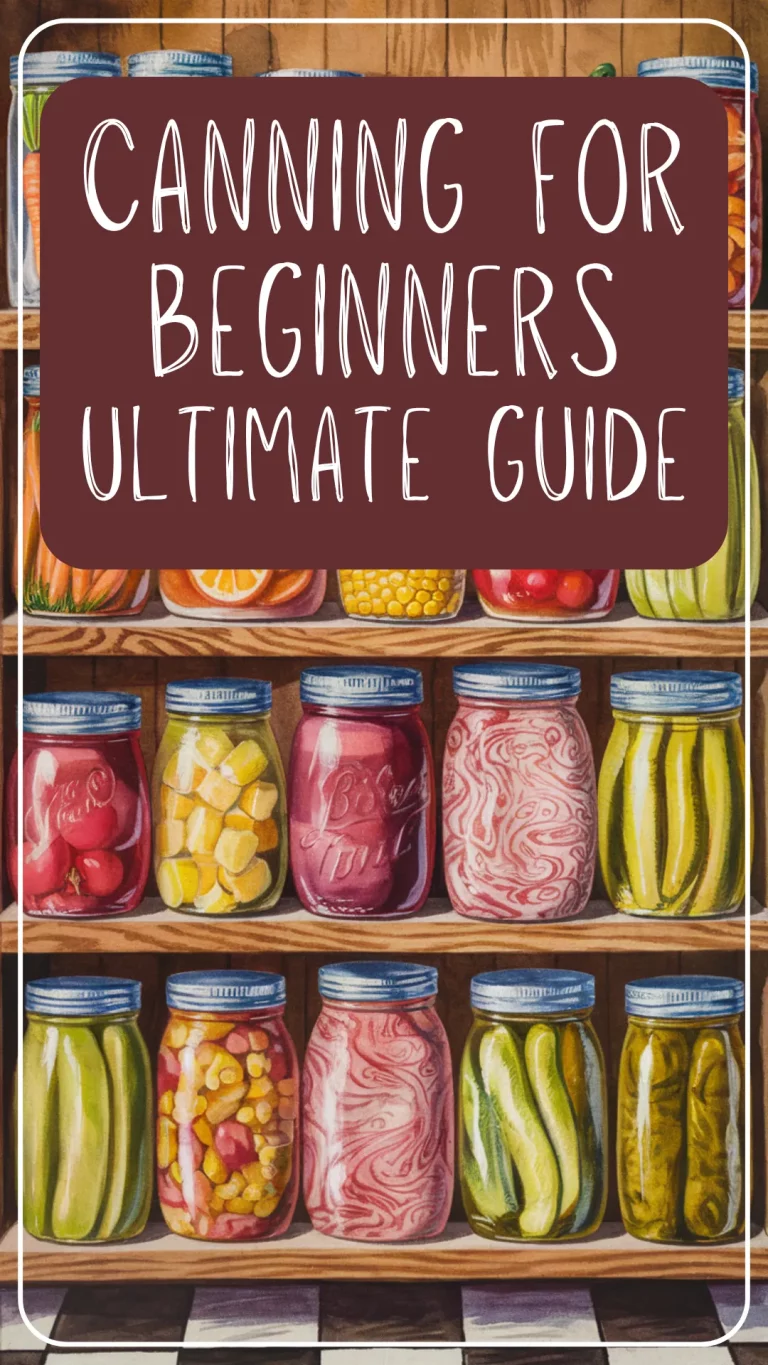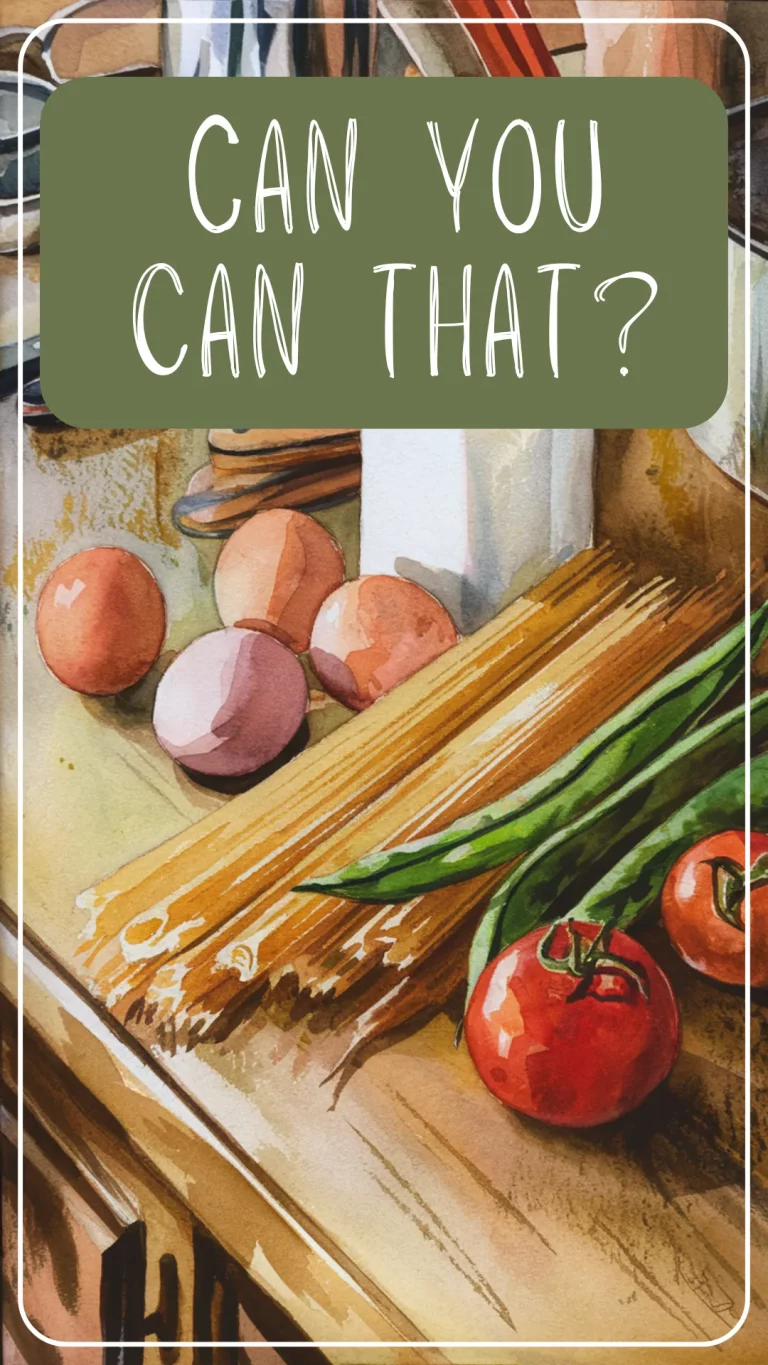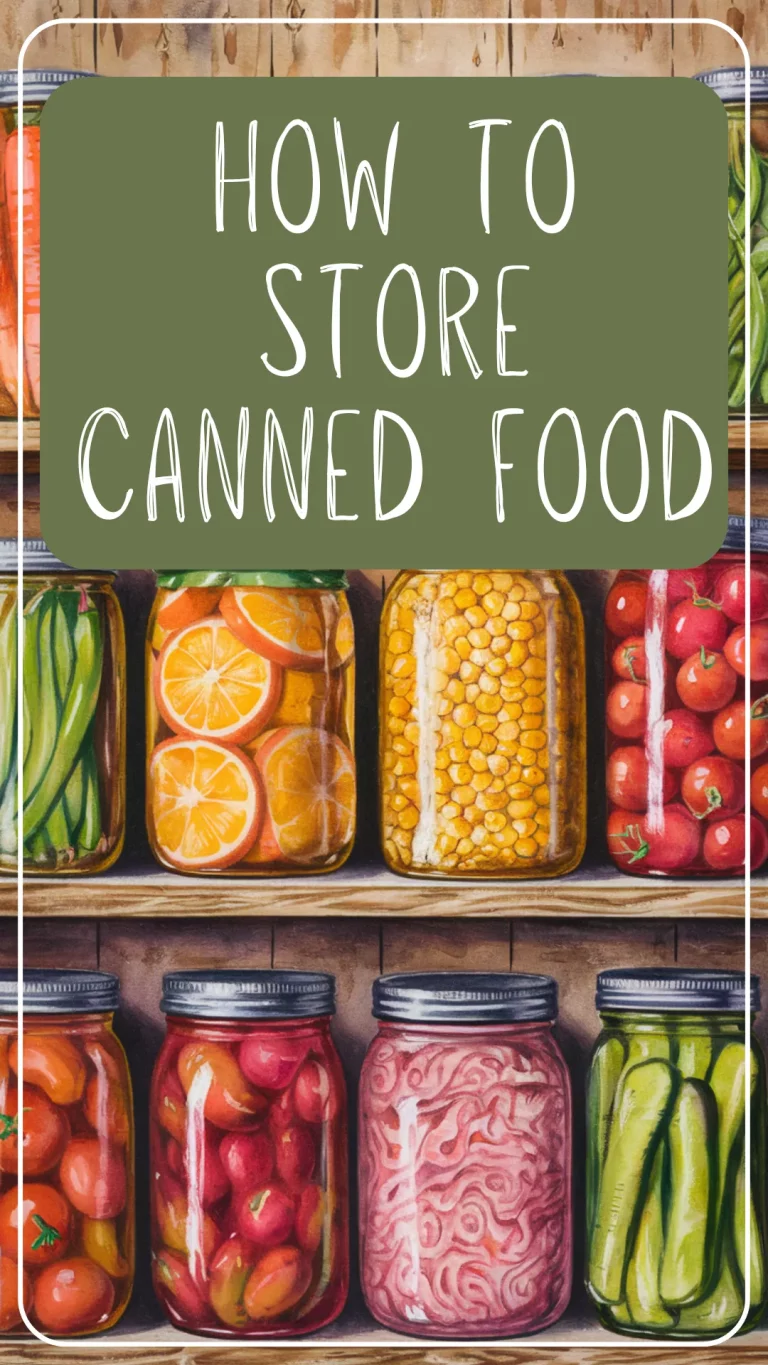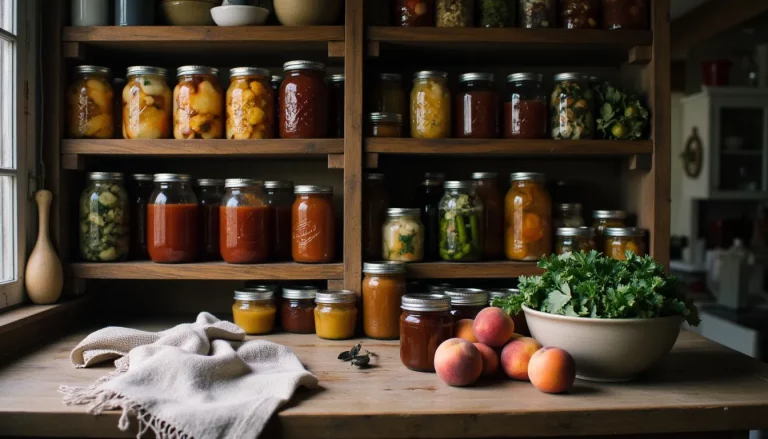Can You Use Commercial Jars For Canning?
You can sometimes use certain commercial jars—like mayonnaise jars—for water bath canning of high-acid foods, but it’s not ideal. These jars are more likely to break or fail to seal, and they’re never safe for pressure canning. Stick with proper Mason jars whenever possible to keep your food safe and your efforts worthwhile.
Inside this post:
That “This Jar Looks Perfect!” Feeling
We’ve all been there—you empty out a store-bought jar of jam or spaghetti sauce and think, “This would be perfect for my homemade salsa!” It looks sturdy. It has a lid. It feels like a Mason jar. And hey, it would be one less thing heading to the recycling bin.
But here’s the thing: not all jars are created equal. While it’s tempting to reuse commercial jars for home canning, especially when you’re trying to be thrifty or avoid waste, there are a few important reasons to pause before you fill them with your next batch of preserves. Let’s talk through what works, what doesn’t, and how to use those recycled jars the smart (and safe) way.
So, Can You Use Commercial Jars for Canning?
The short answer? Sometimes—but it’s risky, and not recommended for beginners.
Some commercial jars, like the ones from store-bought mayonnaise or salad dressing, are pint or quart sized and happen to fit standard two-piece canning lids. These jars can be used for water bath canning of high-acid foods (like jams, jellies, or pickles), but even then, they come with a few big caveats:
- They’re more fragile than Mason jars. Commercial jars aren’t made to handle the high temperatures and repeated heating and cooling that home canning involves. They’re often made with thinner glass and can crack or shatter in the canner—especially if they’ve been scratched by metal spoons or knives while you were scraping out that last bit of mayo.
- The sealing surface is narrower. This means you’re more likely to run into seal failures, which is the last thing you want after putting time and love into preserving your garden harvest.
- They’re not safe at all for pressure canning. The higher temperature and pressure used for low-acid foods (like green beans, corn, or soups) will almost certainly cause these jars to break.
The National Center for Home Food Preservation acknowledges that while some commercial jars might technically work in a water bath, you’re likely to see more breakage and failed seals. And that’s just not worth the risk when you’re dealing with something as time-consuming (and precious) as home-canned food.
What About Other Types of Commercial Jars?
If the jar you’re eyeing doesn’t fit a standard two-piece canning lid, it’s an automatic no.
Some commercial jars have unique threads or oddly shaped mouths that look like they could be reused—but they weren’t designed for canning, and there’s no safe way to ensure a proper seal. Even if the lid seems to “fit,” it won’t form the vacuum seal needed to keep food shelf-stable.
And don’t be tempted to reuse single-use twist-off lids from store-bought jars. They’re not made to be resealed and often warp during their first run through the heat. Trying to reuse them is just asking for a failed seal—or worse, spoiled food.
In short: if it doesn’t match up with a two-piece canning lid, don’t use it for canning. It’s simply not worth the risk.
Safer Ways to Reuse Commercial Jars
Just because commercial jars aren’t great for canning doesn’t mean they have to go to waste. They’re still handy little workhorses for all sorts of other jobs around the kitchen (and beyond).
Here are some safe and practical ways to put them to good use:
- Dry pantry storage – Perfect for rice, beans, pasta, oats, dehydrated fruit, or even sourdough starter.
- Fridge storage – Use them for leftover soup, sauces, salad dressings, or quick fridge pickles that don’t require sealing.
- Gifting and crafts – Fill them with homemade hot cocoa mix, bath salts, or beeswax candles for sweet homemade gifts.
- Seed storage – Tuck away your saved seeds in a cool, dark cupboard in a repurposed jar with a label.
So yes—definitely hang onto those jars. Just give them a job that doesn’t require a perfect vacuum seal or the ability to handle high heat. They’ll still be doing good work in your kitchen.
Budget-Friendly Ways to Stock Up on Real Canning Jars
If the price of brand-new jars has you hesitating, you’re not alone. Canning supplies can add up—especially in the spring rush when everyone’s getting started. But there are a few clever ways to build your collection without blowing your grocery budget.
- Check thrift stores and yard sales – You’d be surprised how often people part with canning jars, especially in bulk. Just inspect them for chips, cracks, or cloudy glass before buying.
- Ask around locally – Post in a buy-nothing group or on your local community Facebook page. Sometimes folks have jars tucked away in basements they’d be happy to pass on.
- Watch for end-of-season deals – Stores often mark down canning jars in late summer and fall. Stock up then for next year.
- Reuse canning jars from previous batches – Mason jars can be reused year after year, as long as they’re in good condition. Just replace the lids each time.
A little patience and resourcefulness go a long way—just like home canning itself.
Final Thoughts: Use the Right Jar for the Job
It’s easy to see an empty commercial jar and feel like you’ve struck gold—especially when you’re in the thick of preserving season and running low on supplies. But when it comes to canning, the safest choice is always a jar that’s made for the job.
Yes, some commercial jars might technically work for water bath canning now and then, but the risk of breakage and failed seals just isn’t worth it—especially when you’re working hard to fill your pantry with food your family will rely on.
So go ahead and save those recycled jars for your dry goods, crafts, or fridge storage. And when it’s time to can the harvest? Reach for the real thing. Your homemade jam—and your peace of mind—will thank you.
Read Next
Curious about other canning safety tips or wondering what gear you really need? These posts will help you build confidence and avoid common beginner mistakes:
How to Get Started with Water Bath Canning (Beginner-Friendly Guide) – Learn the step-by-step process for safely canning high-acid foods like jam, pickles, and tomatoes—perfect for first-timers.
Pressure Canning vs Water Bath: Which One Do You Actually Need? – Not sure which method to use for your recipe? This quick comparison breaks it down so you don’t have to guess.
Why You Should Never Oven Can (Even if TikTok Says It’s Fine) – This trend might look easy, but it’s not safe. Find out why it’s best to stick with tested methods.
Beginner Canning Mistakes to Watch Out For (and How to Fix Them) – From overfilling jars to reusing old lids, this list covers the little things that can cause big problems (and how to avoid them).
